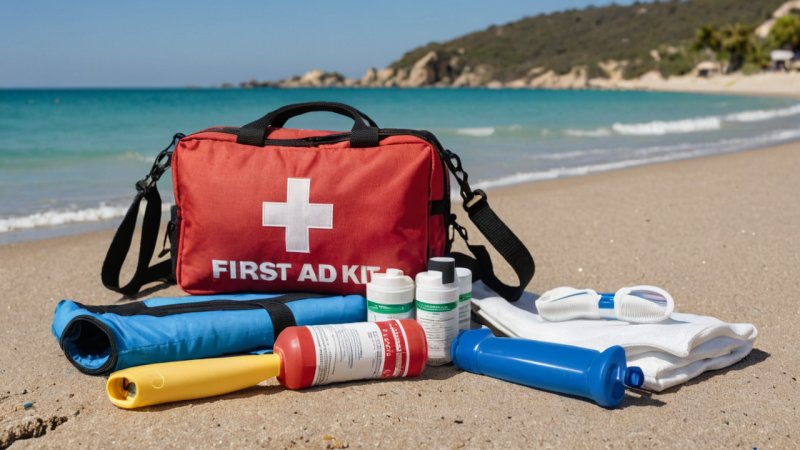Water sports are exhilarating, providing both a sense of adventure and a deep connection to nature. However, with this thrill comes the responsibility of ensuring safety, particularly in the event of an injury or emergency. Understanding and applying essential first aid skills can make a significant difference in managing unforeseen incidents on the water. From kayaking and surfing to paddleboarding and sailing, the unpredictable nature of water sports necessitates that enthusiasts are prepared for injuries ranging from minor cuts to more serious conditions like hypothermia or drowning. In this article, we will explore the vital first aid skills that every water sports enthusiast should master, ensuring not just personal safety but also the well-being of others sharing in these aquatic adventures.
Understanding the Risks Associated with Water Sports
Before diving into first aid skills, it's crucial to understand the variety of risks associated with different water sports. Each activity presents unique challenges:
- Surfing: Risk of injury from surfboards, drowning, and exposure to strong currents.
- Kayaking: Capsizing, hypothermia, and potential collisions with other boats.
- Stand-up Paddleboarding: Falls, sunburn, and dehydration.
- Sailing: Falls overboard, rigging injuries, and weather-related emergencies.
Recognizing these risks allows enthusiasts to better prepare themselves for emergencies that may arise during their activities.
Basic First Aid Skills Every Water Sports Enthusiast Should Know
Equipping yourself with first aid skills is paramount for anyone involved in water sports. Here are some essential skills to consider:
1. CPR (Cardiopulmonary Resuscitation)
Cardiopulmonary resuscitation is a life-saving technique used in emergencies when someone's breathing or heartbeat has stopped. In water sports, this skill is particularly vital in drowning situations. Knowing how to perform CPR can mean the difference between life and death. It's advisable to take a certified CPR course and regularly refresh your knowledge to ensure you're prepared.
2. Treating Cuts and Scrapes
Minor injuries like cuts and scrapes can occur frequently in water sports due to equipment, rocks, or marine life. To treat these injuries:
- Clean the wound with fresh water to remove dirt and debris.
- Apply an antiseptic to prevent infection.
- Cover the wound with a sterile bandage.
Being able to quickly and effectively treat minor injuries can prevent larger complications while enjoying your time on the water.
3. Managing Hypothermia
Hypothermia is a serious condition that can occur when individuals are exposed to cold water for prolonged periods. Signs of hypothermia include shivering, confusion, and fatigue. To manage hypothermia:
- Get the individual out of the cold water immediately.
- Wrap them in warm, dry blankets or clothing.
- Provide warm, non-alcoholic beverages if they are conscious and able to swallow.
Recognizing the symptoms of hypothermia early can mitigate its effects and prevent further complications.
4. Treating Heat Exhaustion
Conversely, heat exhaustion can occur in hot weather conditions, especially when engaging in intense physical activity like water sports. Symptoms may include heavy sweating, weakness, and nausea. To treat heat exhaustion:
- Move the individual to a cooler area.
- Have them lie down and elevate their legs.
- Provide cool water or electrolyte drinks to rehydrate.
Understanding how to address both hypothermia and heat exhaustion ensures that water sports enthusiasts can effectively respond to environmental hazards.
Preparing a First Aid Kit for Water Sports
A well-equipped first aid kit is essential for any water sports enthusiast. Here are key items to include:
- Adhesive bandages of various sizes
- Gauze pads and adhesive tape
- Antiseptic wipes or solution
- Antihistamines for allergic reactions
- Cold packs for swelling
- Elastic bandages for sprains
- CPR face shield
Regularly check and restock your first aid kit to ensure that you have everything you need in case of an emergency.
Staying Calm and Assessing the Situation
In any emergency, maintaining composure is crucial. Panic can hinder your ability to assess the situation and make informed decisions. When faced with an emergency while engaging in water sports, consider the following steps:
- Assess the scene for safety—ensure that it is safe for you to approach.
- Check the individual’s responsiveness and breathing.
- Call for help or alert others nearby if the situation is serious.
By staying calm and taking systematic action, you can effectively manage the emergency and provide the necessary assistance until professional help arrives.
Conclusion
Being a water sports enthusiast comes with immense joy and excitement, but it also carries the responsibility of ensuring safety through preparedness. Mastering essential first aid skills not only empowers you to handle emergencies effectively but also enhances the overall enjoyment of your aquatic adventures. From performing CPR to managing environmental conditions like hypothermia and heat exhaustion, these skills are invaluable. A well-stocked first aid kit and the ability to stay calm in a crisis can make a significant difference in ensuring a safe and enjoyable experience on the water. As you embrace the thrill of water sports, remember that being prepared is just as important as the adventure itself.






